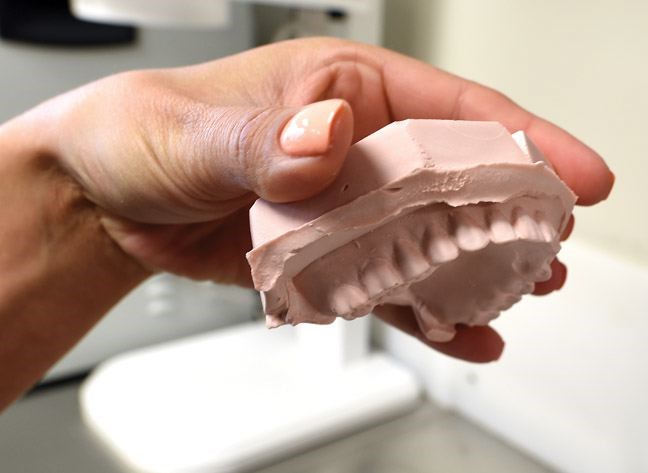When creating dentures, the first step is when the denturist takes an impression of the patient's mouth. A plaster mold is made using the impression and then a model is created using wax. The denturist chooses ceramic teeth, right down to their size and colour, determined to best suit the patient. The teeth are then placed in the wax model of the gum with a hot scalpel-like knife.
Once the model is finished, the patient comes to see if they approve of the dentures.
They're designed to last from five to eight years, with regular maintenance, so the wearer needs to be happy with both the look and the feel of them.
Once the patient has tried the dentures and approved them, they are returned to the denture clinic, where they are sterilized. Then the wax denture is turned into a plastic denture. The wax model is completely encapsulated in plastic, heated so the wax melts away and then the acrylic or plastic fills in the space where the wax once was, securing the teeth into the denture. Then the denture is groomed in case there is an excess of acrylic that needs to be trimmed off. The denturist uses lathes and polishers to perfect the denture.
In the past, making dentures was a multi-layered process done by humans so there had always been a problem with distortion. Now with both human expertise and state-of-the-art machinery, the distortion is minimized resulting in greater fit of the dentures to the patient.
Dentures have come a long way and now there is an option where the gum part of the denture is translucent and that allows for the natural gum to show through where before dentures were created with colour-dense plastic.



